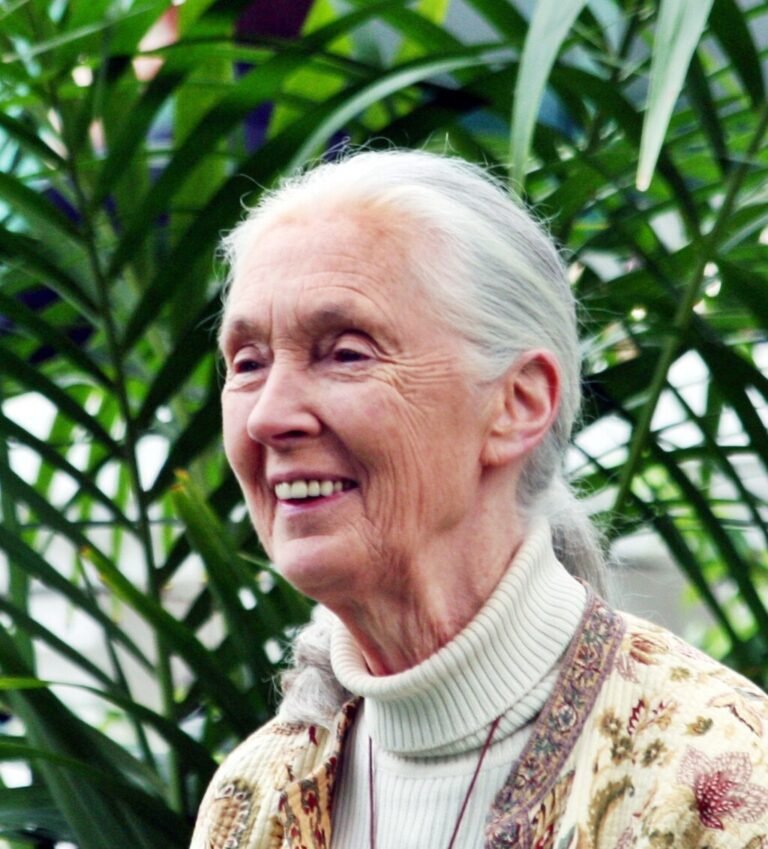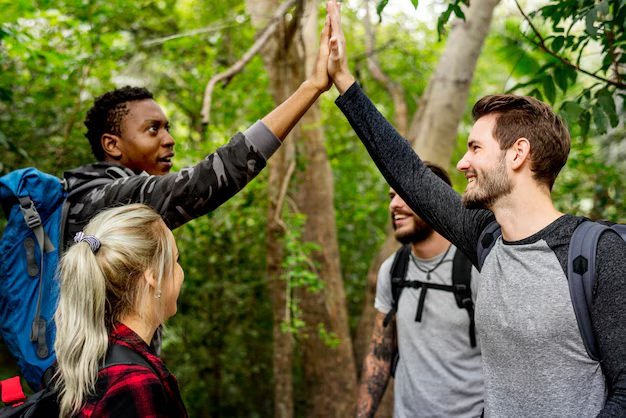10 Environmental Conservationists You Should Know
Environmental conservation isn’t just about charts, climate data, or renewable energy projects. At its core, it’s about people—real individuals who stand up for the planet when it’s easiest to stay silent. These are the voices that shape laws, restore habitats, and bring global attention to environmental justice. Behind every reforested hillside or protected species is someone who cared enough to act.
In this guide, we’re discussing ten remarkable conservationists whose dedication has made a lasting difference. These aren’t abstract figures—they’re researchers, activists, community leaders, and everyday people who’ve turned passion into purpose. Some have challenged governments. Others have worked quietly for decades to bring ecosystems back from the brink. What ties them together is their deep love for the natural world and their refusal to give up on it.
We’ll share their stories, backed by peer-reviewed research and verifiable outcomes, so that you can see the true impact of their work. Along the way, you’ll also find practical lessons you can apply in your own life, whether you’re managing a forest restoration project or just learning how to live more sustainably. These voices remind us that anyone can be a force for change, starting with awareness and growing into action.

In This Article
- 1. Jane Goodall: The Soul of the Forest
- 2. Wangari Maathai: The Green Belt Visionary
- 3. David Attenborough: The Voice of Nature
- 4. Greta Thunberg: The Youthful Conscience
- 5. Sylvia Earle: Her Deepness in the Oceans
- 6. Paul Watson: The Ocean’s Vigilante
- 7. Leah Thomas: Intersectional Environmentalist
- 8. George Monbiot: The Rewilding Radical
- 9. Vanessa Nakate: Climate Justice from Uganda
- 10. Mike Fay: The Mega-Transect Explorer
- Conclusion: What You Can Learn—and Do—From Their Work
1. Jane Goodall: The Soul of the Forest
Jane Goodall’s story is one of quiet determination and deep compassion. In 1960, at just 26 years old, she ventured into Tanzania’s Gombe Stream National Park with little more than a notebook and a dream. Without formal scientific training, she observed chimpanzees in ways no one had before—naming them, noting their personalities, and witnessing them using tools. This challenged the belief that tool-making was exclusive to humans, reshaping our understanding of animal intelligence.
But Jane’s mission extended beyond research. In 1977, she founded the Jane Goodall Institute, focusing on conservation and community-centred development. Recognising the power of youth, she launched the Roots & Shoots program in 1991. This initiative empowers young people to lead projects that benefit people, animals, and the environment. As of 2023, Roots & Shoots has engaged over 1.47 million young participants across more than 10,000 groups worldwide.
Jane’s holistic approach to conservation is evident in programs like TACARE (Take Care), which integrates environmental preservation with community development. By addressing issues like education, sustainable agriculture, and healthcare, TACARE has improved livelihoods while protecting chimpanzee habitats.
Her lifelong dedication has not gone unnoticed. In 2025, she was honoured with the Presidential Medal of Freedom, recognising her contributions to science and conservation.

2. Wangari Maathai: The Green Belt Visionary
Wangari Maathai, a Kenyan environmentalist and the first African woman to receive the Nobel Peace Prize in 2004, believed that planting trees could empower communities and restore degraded lands. In 1977, she founded the Green Belt Movement (GBM) to address deforestation and its impact on rural women. Over the years, GBM has planted over 51 million trees and trained more than 30,000 women in sustainable practices like forestry and beekeeping.
Maathai’s approach was holistic, intertwining environmental conservation with women’s rights and democratic values. She faced opposition and even imprisonment for her activism, yet remained steadfast. Her efforts not only led to environmental restoration but also empowered women economically and socially
The Green Belt Movement’s impact extends beyond Kenya, inspiring similar initiatives across Africa. Maathai’s legacy continues to influence environmental and social movements worldwide. Her story exemplifies how grassroots activism can lead to significant global change.

Learn More: What is the Goal of Wildlife Conservation?
3. David Attenborough: The Voice of Nature
Sir David Attenborough has spent over 70 years bringing the natural world into our homes, his voice becoming synonymous with the wonders of our planet. Through groundbreaking documentaries like Planet Earth, Blue Planet, and Our Planet, he has not only showcased the beauty of nature but also highlighted the pressing environmental issues we face.
In his 2020 documentary, A Life on Our Planet, Attenborough offers a poignant reflection on the changes he has witnessed in the natural world throughout his lifetime. He presents a stark warning about the consequences of human activity on biodiversity and climate, emphasising that we are at a critical juncture. Yet, he also provides a hopeful vision, outlining steps we can take to restore the planet’s health.
Attenborough’s influence extends beyond the screen. His work has inspired policy changes and increased public awareness about environmental issues. For instance, the “Blue Planet effect” led to a surge in interest in marine conservation and a reevaluation of single-use plastics in the UK.
Even as he approaches his 99th birthday, Attenborough continues to advocate for the planet. In his recent Disney+ documentary, Ocean, he reflects on humanity’s evolving relationship with the sea, urging for the protection of marine ecosystems.
Attenborough’s enduring message is clear: while we have been intruders in the natural world, we can become its stewards. His life’s work serves as a testament to the power of storytelling in driving environmental change and reminds us that it’s not too late to make a difference.
4. Greta Thunberg: The Youthful Conscience
In August 2018, a 15-year-old Swedish student named Greta Thunberg sat alone outside her country’s parliament, holding a sign that read “Skolstrejk för klimatet” (“School strike for climate”). Her solitary protest sparked a global movement known as Fridays for Future, inspiring millions of young people worldwide to demand urgent action on climate change.
Greta’s activism quickly gained international attention. Her speeches at major forums, including the United Nations and the European Parliament, have been noted for their clarity and moral urgency. In a particularly impactful address at the UN Climate Action Summit in 2019, she admonished world leaders for their inaction, stating, “You are failing us. But the young people are starting to understand your betrayal. The world is waking up. And change is coming, whether you like it or not”.
The Fridays for Future movement has had tangible effects. In Switzerland, for instance, a study by the Swiss Federal Institute of Technology Lausanne found that nearly a third of the population reported changing their daily habits, such as transportation choices and consumption patterns, due to the influence of climate strikes.
Greta’s efforts have been recognised globally. She has received numerous accolades, including the Right Livelihood Award, often referred to as the “Alternative Nobel Prize,” for her role in mobilising youth and demanding political action on climate issues
While Greta has faced criticism and controversy, particularly regarding her stances on various geopolitical issues, her impact on climate activism remains significant. Her unwavering commitment has galvanised a generation to advocate for environmental responsibility and justice.
5. Sylvia Earle: Her Deepness in the Oceans
Dr. Sylvia Earle, affectionately known as “Her Deepness,” has spent over six decades exploring and advocating for our oceans. With more than 7,000 hours logged underwater, she’s not just a marine biologist—she’s a trailblazer who has reshaped how we understand and protect marine life.
In 1990, Earle made history as the first woman to become Chief Scientist at the U.S. National Oceanic and Atmospheric Administration (NOAA). Her tenure marked a significant shift in ocean policy, emphasising the urgent need to safeguard marine ecosystems.
Driven by a deep commitment to ocean conservation, Earle founded Mission Blue in 2009. This initiative focuses on identifying and protecting “Hope Spots”—critical areas of the ocean vital for biodiversity and ecological resilience. As of 2023, over 140 Hope Spots have been designated worldwide, including regions like the Great Lakes and St. Helena Island. These areas serve as beacons of hope, highlighting the importance of marine conservation.
Earle’s message is clear: “No water, no life. No blue, no green.” This underscores the intrinsic link between healthy oceans and the overall well-being of our planet. Her advocacy extends beyond scientific circles, inspiring global communities to recognise the ocean’s critical role in sustaining life.
Through her relentless efforts, Dr. Sylvia Earle has not only advanced marine science but has also galvanised a global movement to protect our oceans. Her legacy serves as a testament to the power of passion and perseverance in driving environmental change.

6. Paul Watson: The Ocean’s Vigilante
Paul Watson is a name you should know if you care about the oceans. He’s the founder of the Sea Shepherd Conservation Society, an organisation he started in 1977 after parting ways with Greenpeace. Unlike many environmental groups that focus on advocacy and education, Sea Shepherd takes direct action to protect marine life. This means physically intervening to stop illegal fishing and whaling activities, sometimes by placing their ships between the hunters and their prey.
Watson’s methods have been controversial, but they’ve also been effective. Sea Shepherd has been credited with disrupting illegal whaling operations, particularly those conducted by Japan in the Southern Ocean. Their fleet has intercepted numerous vessels, helping to enforce international marine laws and protect endangered species. In 2024, Sea Shepherd’s ship, the Allankay, returned to the Southern Ocean to intensify efforts against destructive krill fishing, which threatens the food supply of whales and other marine life.
Watson’s commitment to marine conservation has not been without personal cost. In July 2024, he was arrested in Greenland due to a long-standing extradition request from Japan, related to his anti-whaling activities. He spent five months in detention before being released in December 2024, when Danish authorities declined to extradite him.
Despite these challenges, Watson remains undeterred. He continues to lead campaigns against illegal whaling and has vowed to end the practice worldwide. His dedication serves as a reminder of the importance of protecting our oceans. As he famously said, “If the ocean dies, we die.”
For more information on Paul Watson and his ongoing efforts to safeguard marine life, you can visit the Captain Paul Watson Foundation.
7. Leah Thomas: Intersectional Environmentalist
Leah Thomas is a passionate environmentalist who believes that we can’t truly protect the planet without also fighting for the people who live on it. In 2020, during the George Floyd protests, she posted a message online urging environmentalists to stand with the Black Lives Matter movement. That message went viral, and it sparked a broader conversation about how environmental issues and social justice are deeply connected.
Leah coined the term “intersectional environmentalism” to describe this connection. It’s a way of looking at environmentalism that includes the voices and experiences of marginalised communities, especially those most affected by pollution, climate change, and environmental injustice. She founded the Intersectional Environmentalist platform to amplify these voices and provide resources for people who want to make environmentalism more inclusive.
Through her work, Leah has helped many organisations rethink their approach to sustainability by considering equity and inclusion. She’s collaborated with companies like Apple and Patagonia, and her book, The Intersectional Environmentalist, is used in classrooms to teach students about the links between environmental and social issues.
Leah’s message is clear: protecting the environment isn’t just about saving trees or reducing carbon emissions—it’s also about ensuring that all communities have clean air, safe water, and a healthy place to live. By bringing people together and highlighting the importance of justice in environmental work, she’s helping to build a more inclusive and effective movement for change.
For more information on Leah Thomas and her work, visit her official website: Leah Thomas.
8. George Monbiot: The Rewilding Radical
George Monbiot’s journey from investigative journalist to environmental advocate is both compelling and inspiring. Initially reporting on global conflicts, Monbiot’s focus shifted towards environmental issues, particularly the concept of rewilding—restoring ecosystems by allowing nature to reclaim its space. His 2013 book, Feral, ignited discussions on rewilding across the UK and beyond, challenging conventional conservation methods.
A frequently cited example by Monbiot is the reintroduction of grey wolves into Yellowstone National Park in 1995. The absence of wolves had led to an overpopulation of elk, resulting in overgrazing and the degradation of vegetation, particularly along riverbanks. The reintroduction of wolves initiated a trophic cascade: elk populations decreased and altered their grazing patterns, allowing vegetation like willows and aspens to regenerate. This resurgence of plant life supported the return of beavers, whose dam-building activities further enhanced the ecosystem by creating habitats for various species and improving water quality.
Monbiot emphasises that rewilding is not about abandoning land but about restoring natural processes and biodiversity. He advocates for policies that support the reintroduction of native species and the regeneration of natural habitats, arguing that such measures can combat climate change and biodiversity loss. His work underscores the interconnectedness of ecosystems and the profound impact that keystone species, like wolves, have on environmental health.
Through his writings and public engagements, Monbiot challenges us to reconsider our relationship with nature. He reminds us that humans are not separate from the environment but are an integral part of it. As he eloquently states, “We are not the rulers of the Earth. We are its children.”
9. Vanessa Nakate: Climate Justice from Uganda
Vanessa Nakate, a young Ugandan climate activist, began her journey in 2019 with a simple yet powerful act: standing alone outside Uganda’s Parliament in Kampala, holding a sign demanding climate action. Inspired by Greta Thunberg’s Fridays for Future movement, Vanessa’s solitary protest quickly evolved into a broader mission to amplify African voices in the global climate conversation.
Recognising that African communities contribute minimally to global emissions yet suffer disproportionately from climate impacts, Vanessa founded the Rise Up Movement. This initiative aims to spotlight the challenges faced by African nations and advocate for climate justice on the continent. Her efforts have taken her to international platforms, including COP25 and COP26, where she has called on world leaders to fulfil their climate finance commitments to the Global South.
Beyond advocacy, Vanessa is committed to practical solutions. Through her Green Schools Project, she has facilitated the installation of solar panels and eco-friendly cookstoves in over 30 Ugandan schools, promoting renewable energy and reducing reliance on firewood. This initiative not only addresses environmental concerns but also improves the health and education conditions for thousands of students.
In 2022, Vanessa’s dedication was recognised by UNICEF, appointing her as a Goodwill Ambassador. In this role, she continues to champion the rights of children and marginalised communities affected by climate change. Her advocacy emphasises that climate change is not just about data and policies but about real people facing real challenges.
10. Mike Fay: The Mega-Transect Explorer
Imagine walking 2,000 miles through dense, untouched rainforest—on foot, with no roads, no shortcuts, and no backup. That’s exactly what Dr. Mike Fay did in 1999. He called it the “MegaTransect,” a 465-day journey across Central Africa’s Congo Basin. But this wasn’t just a personal challenge—it was a mission to spotlight the beauty and fragility of one of Earth’s last great wildernesses.
Fay, a seasoned conservation biologist, meticulously documented the ecosystems he encountered, from towering trees to elusive wildlife. He also recorded the threats: illegal logging, poaching, and encroaching development. His vivid reports and photographs, featured in National Geographic, captured global attention. But more importantly, they reached the ears of Gabon’s then-president, Omar Bongo.
In a bold move, President Bongo decided to act on Fay’s findings. With support from Fay and fellow ecologist Lee White, Gabon established 13 national parks in 2002, protecting about 10% of the country’s land—an unprecedented commitment in Africa at the time.
Fay didn’t stop there. He later co-led marine expeditions that helped Gabon create Africa’s largest network of marine protected areas, safeguarding 23% of its territorial waters.
Today, Mike Fay continues his work with African Parks, coordinating conservation efforts in places like South Sudan. His story is a powerful reminder that one person, armed with passion and perseverance, can inspire a nation to protect its natural heritage.
Learn More: What Is a Tree Hugger?
Conclusion: What You Can Learn—and Do—From Their Work
These ten conservationists remind us that protecting the planet is not a one-size-fits-all effort. From grassroots activism to media storytelling, from underwater missions to forest hikes, conservation has many faces.
Actionable Tips:
- Start Local: Join local conservation cleanups or tree planting.
- Support Organisations: Donate or volunteer with groups like Mission Blue or the Green Belt Movement.
- Raise Your Voice: Use your platform, however small, to advocate for change.
- Educate Yourself and Others: Read books, share articles, and invite open conversations about the environment.
“Hope is not a passive thing. Hope is taking action.” — Jane Goodall







